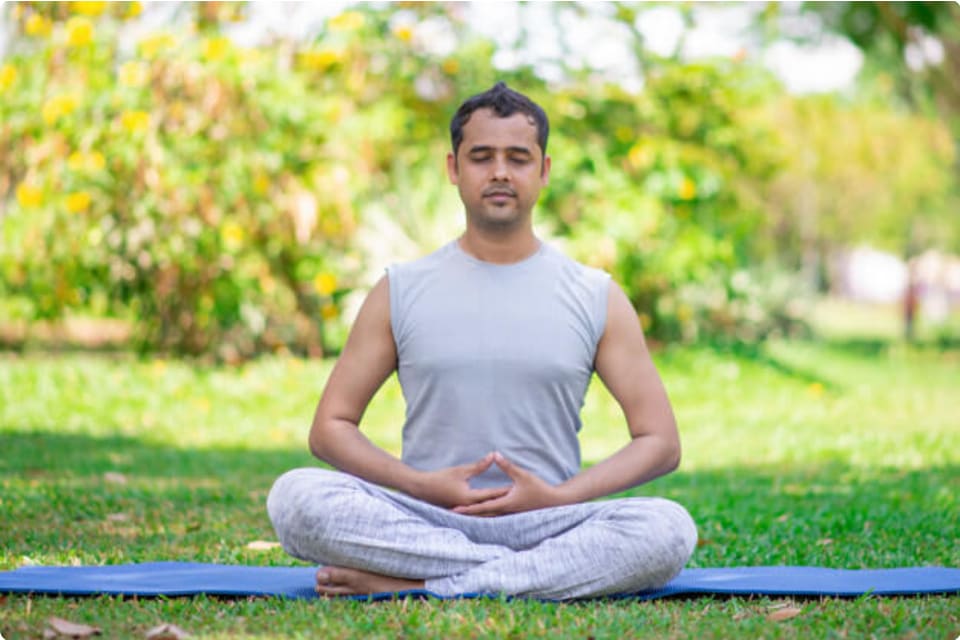A Step-by-Step Strategy on How to Meditate? for Anxiety Relief
A Step-by-Step Strategy on How to Meditate? for Anxiety Relief
Blog Article
Exactly How to Meditate: A Detailed Technique to Achieving Mindfulness and Calm
Reflection serves as an effective tool for attaining mindfulness and emotional calm in a busy globe. By recognizing the essential concepts and techniques included in reflection, people can cultivate a practice that boosts their overall well-being.
Comprehending Meditation
Recognizing meditation includes comprehending its essential principles and techniques, which function as the foundation for the practice. At its core, reflection is a mental workout aimed at promoting relaxation, building internal power, and creating compassion and understanding. The method encourages people to focus their attention, usually with techniques such as deep breathing, visualization, or rule repeating.
Meditation can be categorized into numerous designs, consisting of mindfulness, transcendental, and loving-kindness meditation, each with unique purposes and techniques. Mindfulness meditation stresses present-moment recognition and non-judgmental observation of thoughts and feelings, while copyright includes using particular rules to go beyond average thought procedures. Loving-kindness meditation concentrates on establishing a perspective of love and compassion in the direction of oneself and others.
No matter of the method utilized, the primary objective continues to be regular: to grow a much deeper understanding of the mind and its patterns. This self-awareness cultivates emotional durability, clearness of thought, and a profound sense of tranquility (How to meditate?). By comprehending these concepts and techniques, people prepared for a successful meditation practice that can considerably enhance their overall health
Getting Ready For Your Method
Before starting your reflection technique, it is vital to produce an environment favorable to focus and leisure. Select a silent space where you are not likely to be interrupted. This could be an edge of a room, a garden, or any kind of area that stimulates a sense of tranquility. Guarantee that the location is totally free and tidy of clutter, as a tidy setting can assist clear the mind.
Take into consideration the illumination, as all-natural light can enhance your mood and power. Soft, warm lighting is usually more calming than rough fluorescent lights. Additionally, select a comfy temperature, ensuring that you are neither too warm nor too cool.
Integrating components that promote tranquility can even more improve your experience. This might include soft cushions or coverings for convenience, as well as calming scents from necessary oils or scent. It can also be valuable to have actually a timer established for your meditation session to stop interruptions from clock-watching.
Fundamental Meditation Strategies

An additional reliable method is body check meditation. This includes psychologically scanning your body from helpful hints head to toe, seeing any kind of locations of stress or pain and knowingly relaxing those muscle mass. This method cultivates a deeper connection between your body and mind.
:max_bytes(150000):strip_icc()/GettyImages-1612233479-7d525a96ed0f400590282babfd771bbd.jpg)
Finally, loving-kindness reflection focuses on growing compassion towards on your own and others. Calmly repeat expressions of a good reputation, improving emotional wellness and interconnectedness. Each of these techniques functions as a foundation for your reflection trip, allowing you to discover the approach that resonates ideal with your individual method.
Preserving Emphasis and Mindfulness

Developing a committed meditation space can enhance the capability to maintain mindfulness. A silent, clean setting reduces interruptions, enabling much deeper immersion in the practice. In addition, setting a time frame can help handle expectations; beginning with much shorter sessions might alleviate the change into longer methods.
Using techniques such as body scanning or observing feelings can also bolster mindfulness. These methods urge professionals to stay present and engaged with their physicality, anchoring their focus in the minute. Routine technique is important; the brain develops strength over time, creating a more powerful ability for emphasis.
Incorporating Reflection Into Every Day Life
Incorporating meditation right into daily life can change regular tasks into possibilities for mindfulness and self-reflection. By incorporating mindfulness practices into usual tasks, people can cultivate a greater feeling of existence and peace amidst the numerous hours of daily life.
Begin by identifying moments throughout your day where you can exercise and pause mindfulness. Throughout your morning commute, emphasis on your find breath or the experiences of the environment around you. In the kitchen, strategy food preparation as an introspective method, appreciating the structures, colors, and aromas of the active ingredients. Also ordinary activities like washing recipes or strolling can end up being opportunities for meditation by routing your interest to the experiences of movement and the sounds bordering you.
Furthermore, alloting dedicated times for reflection can strengthen its practice. Start with brief sessions, gradually raising duration as you end up being extra comfortable. Use pointers or signs-- like a certain time of day or a relaxing sound-- to establish consistency.
Eventually, the goal is to weave mindfulness into the fabric of life, enabling you to approach each moment with objective, thus improving your general sense of wellness and clearness.
Final Thought
In final thought, efficient meditation needs a silent atmosphere, a comfortable placement, and a focus on the breath. Regular reflection, also in short sessions, promotes a deeper connection to the existing minute, inevitably leading to greater calm and mental quality in day-to-day life.
Meditation can pop over to this site be classified into various designs, consisting of mindfulness, transcendental, and loving-kindness meditation, each with unique objectives and methods. Mindfulness reflection highlights present-moment awareness and non-judgmental observation of ideas and feelings, while copyright involves the use of certain concepts to transcend average thought procedures.With your meditation room prepared, it's time to discover numerous basic reflection methods that can assist grow mindfulness and internal peace.Consistently keeping focus and mindfulness during meditation can be challenging, especially for those new to the practice.Establishing a specialized reflection space can enhance the ability to keep mindfulness.
Report this page